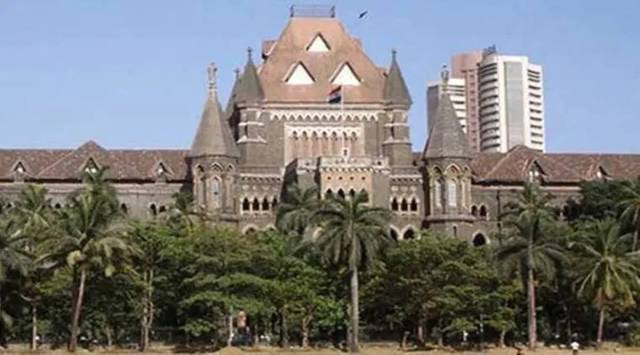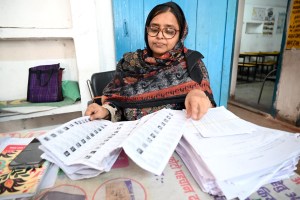Stay updated with the latest - Click here to follow us on Instagram
PIL on need for audio-video facilities: Visit prisons and report on need for communication facilities, Bombay HC to AG
The PIL sought implementation of provisions of telephones and electronic communication as per the Model Prison Manual in all jails, and set aside the “abrupt” government decision taken in 2021 to discontinue such services.
 The PIL, filed by People’s Union of Civil Liberties, stated that when physical meetings in prisons were discontinued two years ago after the Covid-19 outbreak, prison authorities had provided telephone and video conference facilities to all prisoners irrespective of the offences leveled against them. (File)
The PIL, filed by People’s Union of Civil Liberties, stated that when physical meetings in prisons were discontinued two years ago after the Covid-19 outbreak, prison authorities had provided telephone and video conference facilities to all prisoners irrespective of the offences leveled against them. (File)The Bombay High Court on Monday suggested to Advocate General Ashutosh Kumbhakoni that he personally visit prisons to observe the situation and give an independent report, after the court was informed that the video-calling facility for inmates, which has been discontinued since December 2021, cannot be resumed due to logistical and security issues.
A special bench of Chief Justice Dipankar Datta and Justice S S Shinde was hearing a public interest litigation (PIL) seeking immediate installation of telephones and other electronic modes of communication in all prisons so that inmates can speak with their lawyers and relatives via video and voice-calling facilities.
The PIL, filed by People’s Union of Civil Liberties, stated that when physical meetings in prisons were discontinued two years ago after the Covid-19 outbreak, prison authorities had provided telephone and video conference facilities to all prisoners irrespective of the offences leveled against them.
The PIL sought implementation of provisions of telephones and electronic communication as per the Model Prison Manual in all jails, and set aside the “abrupt” government decision taken in 2021 to discontinue such services.
When AG Kumbhakoni pointed out that there were practical difficulties in implementing such facilities in prison, Justice Shinde suggested that the Advocate General himself visit prisons to understand the situation of the inmates. Justice Shinde told Kumbhakoni about his own visit to two prisons along with Supreme Court Judge, Justice U U Lalit, and his suggestions after the visit.
“Please do visit jails and then you will understand..Those prisons have a capacity of 600 and there are over 3,500 prisoners. So, all facilities have to be updated accordingly. The prisoners should know about the status of their matter and how much… of their sentence they have served. After you visit, it will change your perspective,” Justice Shinde said, adding that there have to be technical experts in prison to look after electronic communication facilities.
Chief Justice Datta said, “You cannot have correctional homes with so many people… capacity of 600… instead with 3,500 people in it. Hence, the Supreme Court had passed orders during Covid-19 and set up a committee to release prisoners.”
He also asked AG Kumbhakoni to visit the prison, as suggested by Justice Shinde, and give his independent report by the next hearing, scheduled on July 11.
Meanwhile, as per the directions given by the High Court on May 2, the state Home Department, through Inspector General (Prisons) Sunil Ramanand, filed an affidavit in response to a PIL, stating that the 2016 Manual had not been adopted by the state yet and therefore it was not applicable in Maharashtra.
It added that the present Prison Manual, which is in force, did not provide for video-calling facilities as one of the modes available for communication to inmates and therefore in “total absence” of such a provision, petitioner or prisoners cannot seek such relief.
The affidavit further said that under exceptional circumstances, such video calling facilities were made available to the prisoners even in absence of provisions, only on “compassionate and humanitarian grounds as a result of “extraordinary and unique situation”.
The Home Department also added that there were security issues and practical difficulties in continuing video-calling facilities as prisoners, who earlier availed such facilities, were registered and the verification process was conducted prior to allowing them. However, it became difficult to verify each and every prisoner, and there was no machinery or system in place to monitor all audio/video interactions of prisoners.
“There is a huge uncertainty as to decipher or infer the conversation between the prisoners and the person at the other end during the audio-video interactions, even if such members are verified, especially, if it is in a language not familiar to the prison staff,” the state government said.
“During the lockdown time, it (verification process) was possible as the entire staff was available at the disposal of the prison authorities since their deployment was not necessary in places with high-security requirements, such as government offices, physical hearings at court etc which were all closed during the period of lockdown,” the affidavit read.
The affidavit further stated that the department was taking “positive steps towards implementation of the new e-prison system and will actively work towards upgrading current available facilities for effective and efficient management of prisons in the state”.







